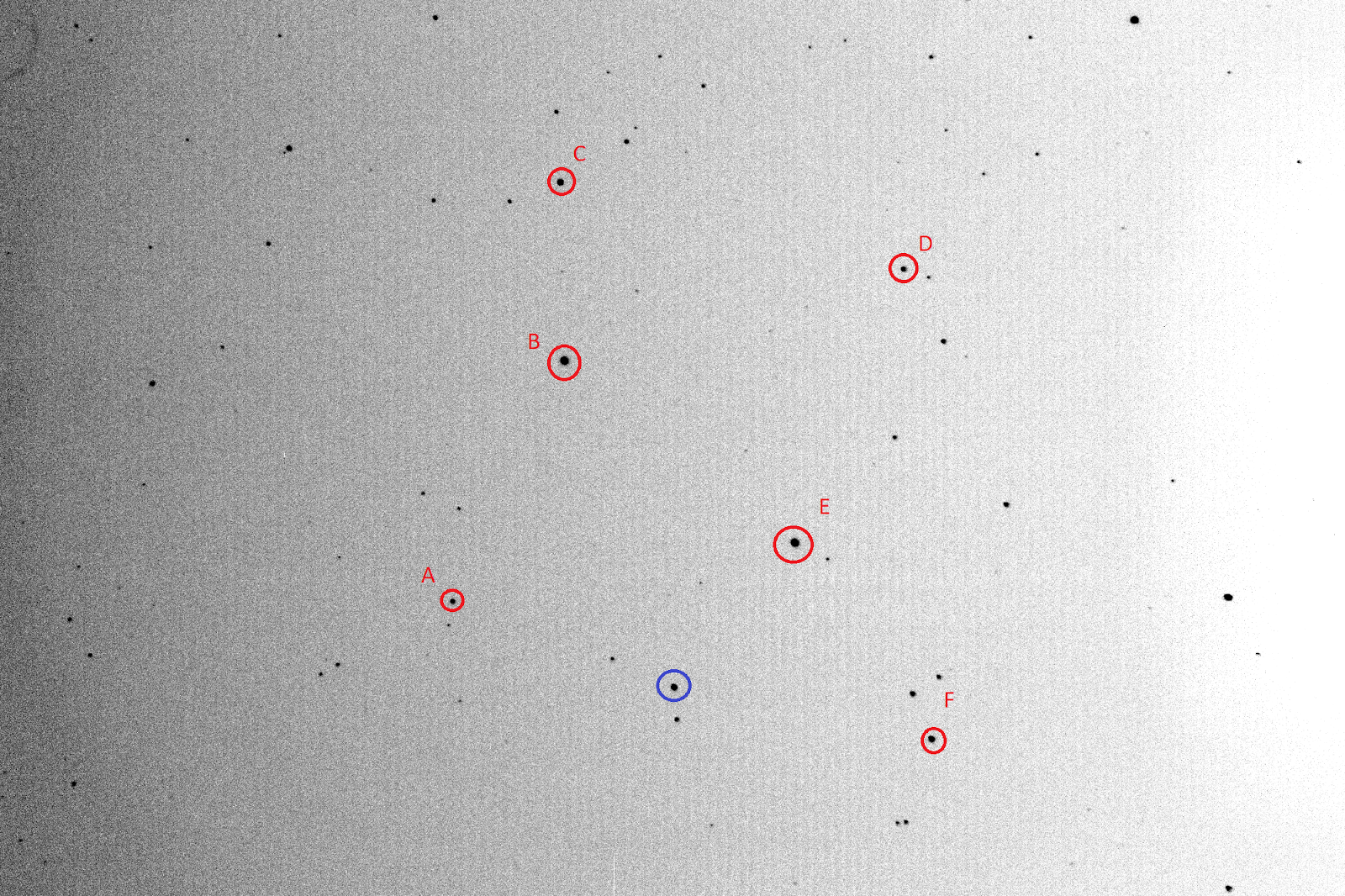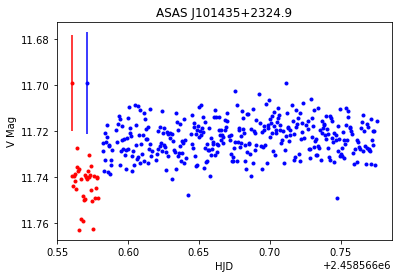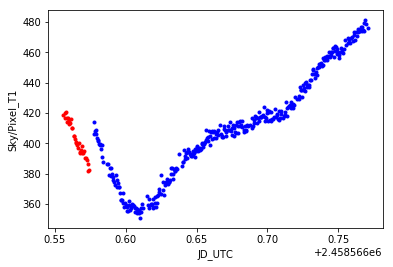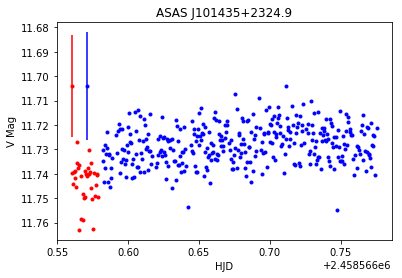
On the night of Mar 23/24, 2019, Jen Connelly and Kain McCall visited the observatory in order to collect data for Kain's capstone project. Below is Kain's account of their work.
Target: ASAS J101435+2324.9
| Dark Exposure Time | Use with Images |
|---|---|
| 3 | skyflat_V_3, domeflat_V_3 |
| 5 | skyflat_V_5 |
| 30 | Science images |
I have selected “remove gradient” for both domeflats and skyflats.
I am using the master skyflat to clean my science images.
| Reason for Omitting | Image #’s |
|---|---|
| Satellite | 23, 89 |
| Trailed/Telescope Moved | 32, 35, 40-44, 61, 65, 73, 100, 162, 163, 165-167, 236, 268, 269, 271, 280, 304, 307, 320, 329, 339, 340, 342, 410, 413, 420 |
Reference Stars Used (Target in Blue):

| Label Above | UCAC4# | VMag (UCAC4) |
|---|---|---|
| A | 568-047562 | 12.872 |
| B | 568-047559 | 9.847 |
| C | 569-046892 | 11.270 |
| D | 569-046869 | 12.601 |
| E | 568-047548 | 10.103 |
| F | 568-047539 | 11.674 |
Images 1 to 39 will be in data file 1, and will use reference stars A, B, E, and F.
Images 45 to 446 will be in data file 2, and will use reference stars A, B, C, D, E, and F.
Data File 1 Aperture Labels:
| Aperture # | Star |
|---|---|
| T1 | Target |
| C2 | Ref A |
| C3 | Ref B |
| C4 | Ref E |
| C5 | Ref F |
Data File 2 Aperture Labels:
| Aperture # | Star |
|---|---|
| T1 | Target |
| C2 | Ref A |
| C3 | Ref B |
| C4 | Ref C |
| C5 | Ref D |
| C6 | Ref E |
| C7 | Ref F |
Aperture Size: (Based on seeing profile of reference star B): 8-14-21
Notes:

This is the calculated magnitude of the star over the course of the night. The red points are those from the first data file (before the telescope was moved), and the blue points are from after the telescope was moved. Since more reference stars were visible after the telescope was moved, the blue points were calculated using two more reference stars than the red points.
The following is a graph of the sky background per pixel over the course of the night:

It seems like the sky background per pixel shifted upwards after the telescope was moved. This could be because of the reflection caused by the very bright star just offscreen, since the reflection appeared only after the telescope was moved. Since it looks like there were changes in some of the values after the telescope was moved, and the previous graph of magnitude over time looks like it may have an offset between the red and blue values, I decided to recalculate the light curve using the same four reference stars for before and after the telescope was moved.
This is the result:

The offset seems to have fixed itself somewhat. From this graph, it is hard to tell if this star might be varying. It would be helpful to get an additional night of data on this target-- if this star is varying periodically, this may be the maximum-- if it is not varying, this could be an offset caused by the reflection.
As a note, I had to use reference star A as the comparison star that I use to calculate the error bars, since it is the only common reference star which is fainter than the target. However, it is significantly fainter than the target, so the error bars are somewhat larger than what the actual error should be for this target.
Last modified 03/26/2019 by MWR.